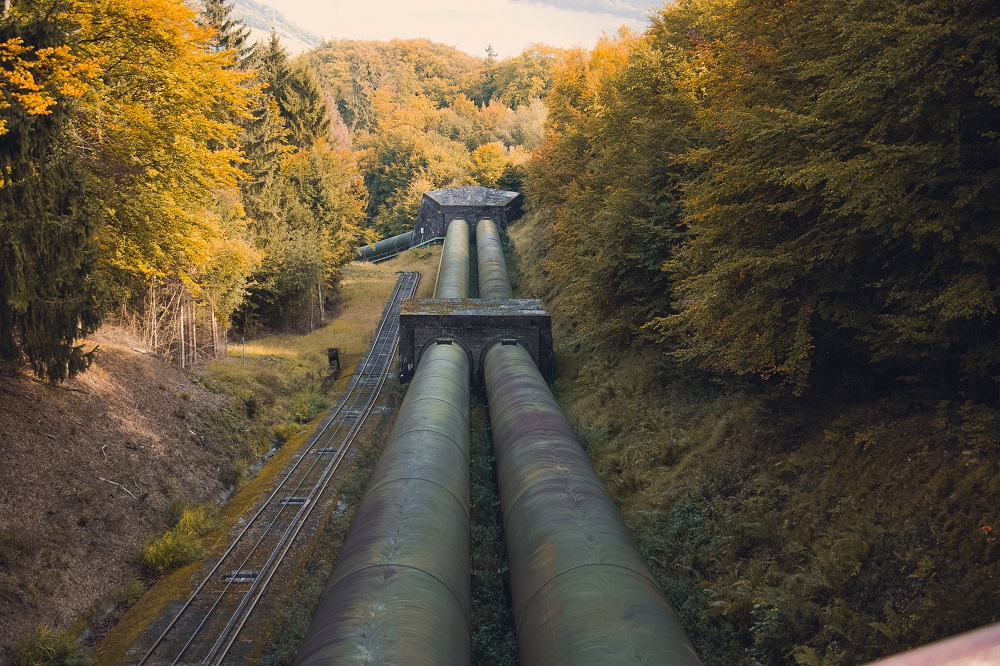Oil and gas pipeline projects have the essential task of transporting fuel commodities over long distances around the world. Here are some of the biggest.

Pipelines are considered one of the most economical modes for transporting oil and gas (Credit: outgunned21/Freeimages.com)
The transportation of oil and gas over long distances around the world can be a challenging endeavor, and pipeline projects have become relied upon by energy firms to ensure valuable commodities arrive safely at their intended destination.
The biggest pipelines can stretch for thousands of kilometers at a time, spanning continents, crossing international borders and even travelling under oceans to carry their fuel loads to new markets and customers around the world.
In 2014, there were an estimated 3.5 million kilometres of pipeline weaving their way across the globe.
In October 2019, Danish lawmakers granted approval for a new pipeline under construction to pass through the country, clearing the final obstacle to a major new 1,230km gas pipeline – Nord Stream 2 – that will move natural gas from Russia to Germany.
Here we profile some of the world’s largest and most significant oil and gas pipeline projects.
The world’s major oil and gas pipelines
Druzhba Pipeline
The Druzhba pipeline carries oil 4,000km from eastern Russia to destinations in Ukraine, Belarus, Poland, Hungary, Slovakia, the Czech Republic and Germany.
Construction began in 1960 and came into operation in 1964, at a total cost of around $5.92m.
It is capable of transporting between 1.2 million and 1.4 million barrels of oil per day, and incorporates 20 pumping stations along its route.
Work is currently underway to extend sections of the pipeline between Belarus and Poland.
West–East Gas Pipeline
The first phase of the natural gas pipeline that runs between the east and west of China began its trial run in October 2004, before entering into commercial operations the following year.
PetroChina West–East Gas Pipeline Company, a subsidiary of PetroChina, owns and operates the 4,000km pipeline which runs from Lunnan in Xinjiang to Shanghai.
Overall, the West–East Gas Pipeline Project (WEPP) involves construction of four pipelines that will connect Tarim Basin in Xinjiang Autonomous Region and Turkmenistan with the Yangtze Delta and Pearl Delta regions.
Construction on the second pipeline (WEPP II) started in February 2008 and was completed in December 2012. The WEPP III was completed in August 2014, while WEPP IV remains in the planning stage.
Yamal-Europe Pipeline
The 4,107km natural gas pipeline runs across four countries including Russia, Belarus, Poland and Germany.
While the planning for the pipeline started in 1992, Russia, Belarus and Poland signed intergovernmental agreements for it in 1993.
In Russia, the pipeline is 402km long and begins at the Torzhok gas transmission hub and receives gas from the Northern Tyumen Regions-Torzhok gas pipeline.
While it is 575km-long in Belarus, the Polish section of the pipeline measures 683km-long.
The Russian section of the pipeline is owned and operated by Gazprom.
ESPO pipeline
With a length of more than 4,800km, the Eastern Siberia-Pacific Ocean oil pipeline (ESPO) exports crude oil from Russia’s oilfields to the Asia-Pacific markets of Japan, China and South Korea.
Built and currently operated by Transneft, construction of the pipeline’s initial 2,757km stage began in April 2006.
It opened in December 2009, with a capacity of 30 million tonnes of oil per year, before a second leg of the pipeline, ESPO-2, opened in December 2012 extending the original project by approximately 2,100km.
Keystone XL Pipeline
It is a cross-border crude oil pipeline that will run from Hardisty in Canada to Steele City in the US state of Nebraska.
The 1,897km-long project has been designed to have a capacity to transport more than 800,000 barrels per day of heavy crude from Canadian oil sands in Alberta into Nebraska.
Construction of Keystone XL pipeline is estimated to cost $8bn.
In March 2017, TransCanada secured presidential permit from the US government to move ahead with the construction of crude oil pipeline project, and in 2018 secured enough shipper commitments to proceed with construction.
It will link to an existing pipeline network to feed the US refineries and ports along the Gulf of Mexico.
The Keystone XL pipeline project is expected to create 42,100 construction jobs for up to two years and also contribute approximately $3.4bn to the US gross domestic product (GDP).
Rockies Express Pipeline
The 2,755km-long natural gas pipeline enables producers in the Rocky Mountain and Appalachian Basin production regions to deliver gas to the Midwest and eastern parts of the US.
The Rockies Express pipeline is operated by Tallgrass Development and became fully operational in 2009 – comprising three sections.
The 528km REX Entrega section runs between the Meeker Hub in Rio Blanco County in Colorado and the Cheyenne Hub in Weld Country, Colorado.
The REX West section has a length of 1,147km running from Weld County to Audrain County in Missouri, near St Louis.
The final section, REX East, is a 1,027km-long pipeline running from Audrain County, Missouri, to Clarington in Monroe County, Ohio.

